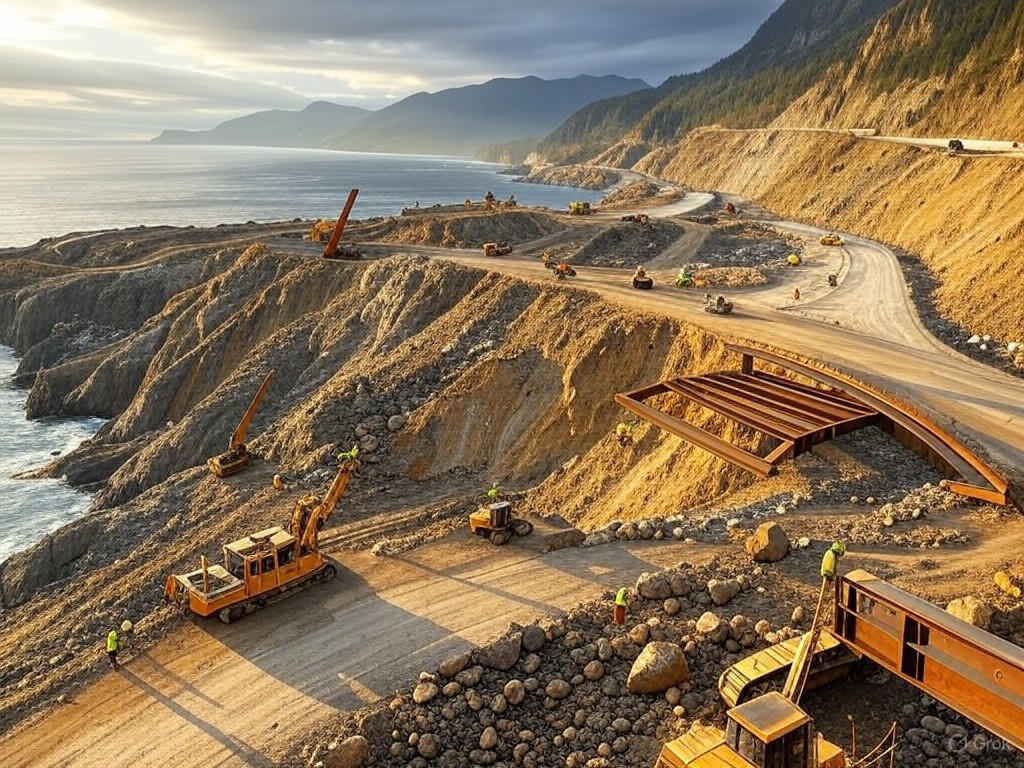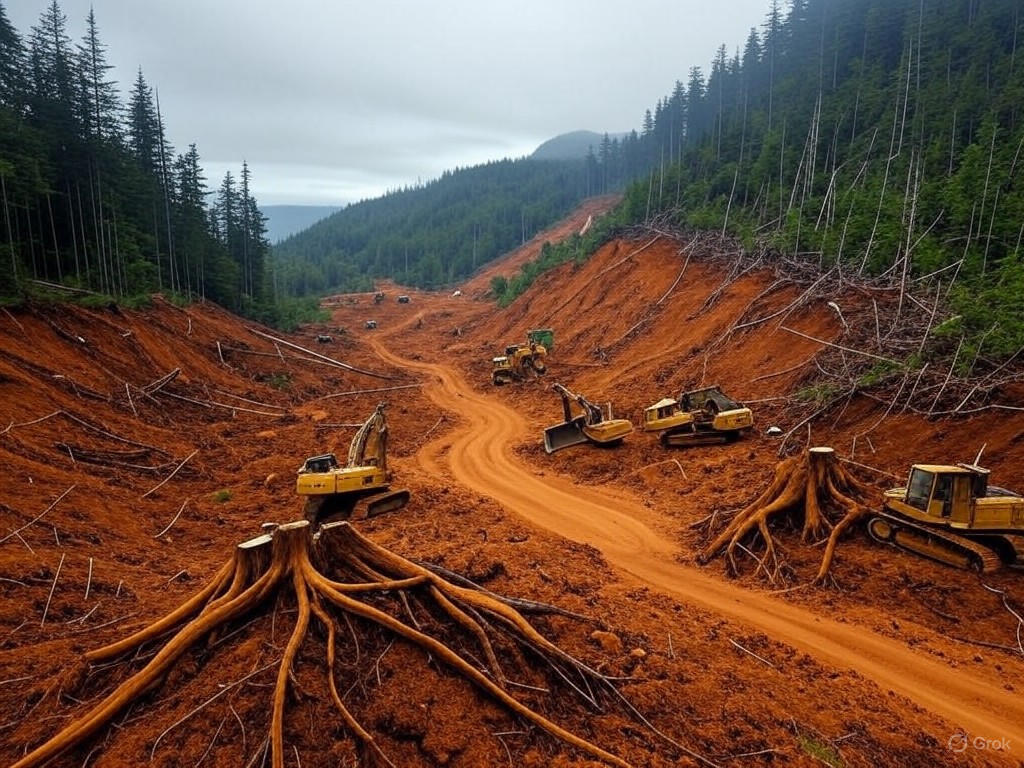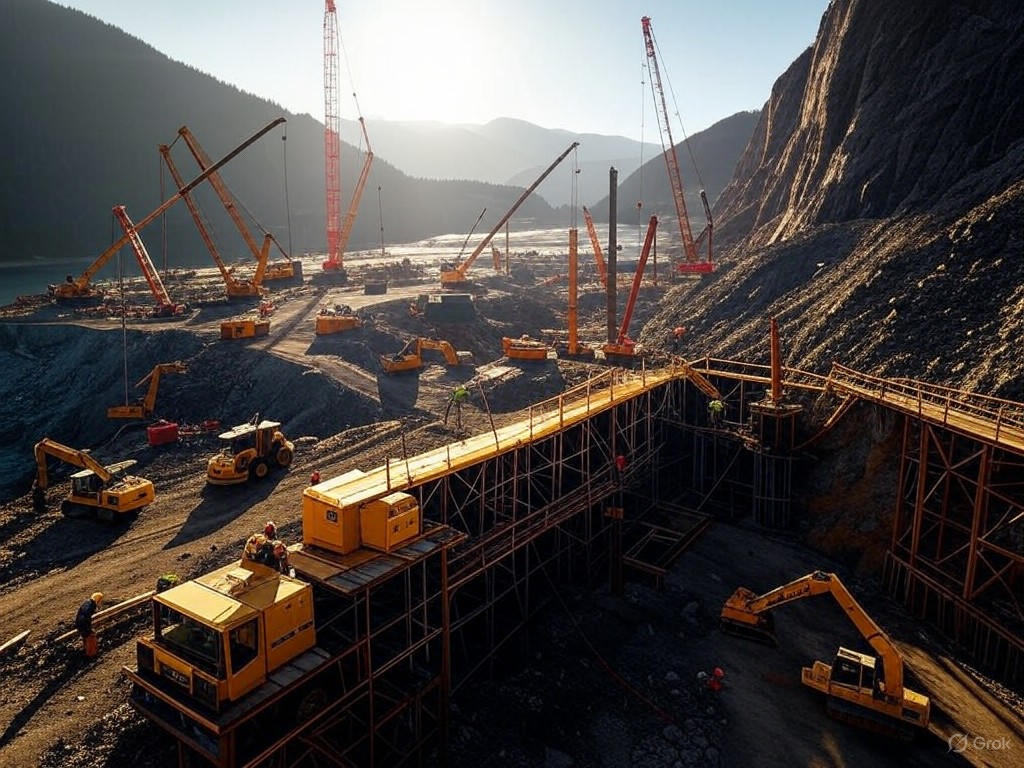BC’s Infrastructure Act: Fast-Tracking Global Competitiveness?
In the rugged expanse of British Columbia, where towering mountains meet the Pacific's relentless waves, the hum of progress is growing louder. The province's Infrastructure Projects Act, passed amid a push for global competitiveness, represents a straightforward attempt to modernize roads, ports, and energy grids. Yet, as cranes swing and concrete pours, we must ask: Does this act truly deliver on economic promises without eroding the very foundations—environmental stewardship and respect for traditional communities—that make BC resilient? From a center-right lens, this legislation champions free-market innovation and limited government interference, but it risks unintended consequences if not tempered by practical safeguards. Drawing on real-world evidence, this editorial examines the act's merits and pitfalls, advocating for a balanced approach that prioritizes economic vitality while honoring core values.
The Economic Imperative: Fueling Growth in a Competitive World
British Columbia's Infrastructure Act is, at its core, a pragmatic response to the demands of a global economy. Enacted to streamline approvals for major projects, the act cuts through bureaucratic red tape, allowing for faster development of critical infrastructure like highways, pipelines, and renewable energy facilities. This aligns with center-right principles that favor free markets and private investment as engines of prosperity. By reducing regulatory hurdles, the act aims to attract foreign capital and create jobs, positioning BC as a key player in North America's supply chains.
Consider the act's potential to boost trade routes along the West Coast. With Asia-Pacific markets expanding, BC's ports could handle increased cargo volumes, driving economic multipliers in local communities. A Wall Street Journal analysis highlights how similar reforms in other regions have led to a 15–20% uptick in GDP growth by expediting projects that private firms would otherwise shy away from due to delays. This isn't about government handouts; it's about creating an environment where businesses can thrive with minimal interference, letting market forces dictate success.
Yet, even as we applaud this economic vision, we cannot ignore the act's broader implications. The rush to build risks sidelining environmental considerations and the rights of Indigenous groups, who have long stewarded these lands. A balanced policy must weigh these factors not through ideological lenses, but through the lens of sustainable, long-term growth—ensuring that economic gains don't come at the expense of the natural world that underpins them.

Heavy machinery at work on a new highway segment in British Columbia, illustrating the act's role in enhancing trade and connectivity.
Analyzing the Risks: Environment and Traditional Values in the Balance
At the heart of the Infrastructure Act lies a tension between progress and preservation. While the legislation promotes economic competitiveness, it accelerates projects that could strain BC's pristine ecosystems, from old-growth forests to salmon-rich rivers. Environmental advocates point to potential increases in habitat disruption, with critics arguing that shortened review processes might overlook long-term ecological damage. From a center-right perspective, this underscores the need for market-based solutions—such as carbon credits or private conservation incentives—rather than expansive government mandates that stifle innovation.
Take, for instance, the act's application to energy infrastructure. Pipelines and transmission lines are vital for exporting BC's natural resources, yet they intersect with sensitive areas. A report from the Fraser Institute, a respected think tank, warns that without targeted reforms, such projects could lead to a 10–15% rise in deforestation rates over the next decade. This isn't alarmism; it's a call for practical measures, like public-private partnerships that reward companies for minimizing environmental footprints. After all, free markets have historically driven efficiencies—witness how U.S. energy firms reduced emissions through innovation, not regulation.
Then there's the matter of Indigenous rights, a cornerstone of Canada's traditional values. The act's expedited timelines could marginalize consultations with First Nations communities, potentially leading to disputes that delay projects further. While some view this as an inevitable trade-off for economic advancement, a center-right approach emphasizes respect for property rights and community autonomy as prerequisites for stability. As CBC News detailed, ongoing legal challenges from groups like the Gitxsan Nation highlight how poorly handled consultations can erode trust and invite costly litigation. Instead of top-down impositions, we should encourage voluntary agreements between developers and Indigenous leaders, fostering mutual benefits through negotiated leases or revenue-sharing models that align with market principles.
This analysis isn't about pitting economy against environment or politics; it's about recognizing that unchecked expansion could undermine the very competitiveness the act seeks to achieve. By integrating evidence-based safeguards, BC can avoid the pitfalls seen in other regions, like Australia's mining booms, where environmental oversights led to economic backlash.
Evidence from the Ground: Weighing the Data
The evidence supporting and challenging the Infrastructure Act paints a nuanced picture. Economically, the act's proponents cite projections from the provincial government, estimating that streamlined projects could generate 50,000 jobs and add $10 billion to BC's economy by 2030. This aligns with global trends, as a World Bank study shows that nations with efficient infrastructure policies see sustained growth rates 2–3% higher than their peers.
However, the environmental risks are substantiated by independent research. For example, a Natural Resources Canada assessment indicates that accelerated infrastructure development could exacerbate climate vulnerabilities, such as increased flooding in coastal areas due to habitat loss. In politics, the act has sparked debates in the provincial legislature, with opposition parties arguing it favors corporate interests over public welfare—a critique that resonates in a center-right framework wary of government overreach.
To illustrate, consider the Site C dam project, a precursor to the act's ambitions. Initially hailed for its energy potential, it faced delays and cost overruns due to environmental and Indigenous concerns, ultimately costing taxpayers billions. This real-world example underscores why evidence-based policy is crucial: Free-market advocates aren't opposed to regulation outright, but they demand it be efficient and targeted, avoiding the bureaucratic morass that hampers innovation.

Satellite imagery of forested areas cleared for infrastructure, emphasizing the environmental trade-offs of rapid development.
A Path Forward: Balancing Ambition with Responsibility
In conclusion, British Columbia's Infrastructure Act holds promise as a catalyst for economic renewal, embodying the center-right ideal of limited government enabling free-market dynamism. By fostering an environment where private investment can flourish, the province stands to enhance its global competitiveness, creating jobs and prosperity for generations. Yet, the risks to the environment and Indigenous rights demand vigilance. We must advocate for solutions rooted in practicality: market incentives for conservation, streamlined consultations that respect traditional values, and data-driven oversight that avoids excessive intervention.
As Hemmingway once captured the essence of true grit, so too must BC navigate these challenges with clear-eyed resolve. Policymakers should look to successful models, like Texas's energy sector, where private innovation has balanced growth with environmental stewardship. Ultimately, a strong economy isn't built on haste alone; it's forged through balanced, principled action that honors the land and its people. For BC, the road ahead is one of opportunity—if we choose the right path.

Indigenous elders surveying a proposed infrastructure site, symbolizing the importance of inclusive and respectful dialogue in policy implementation.

